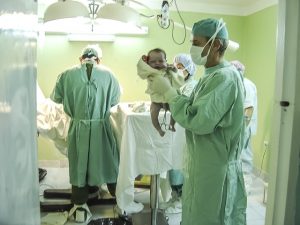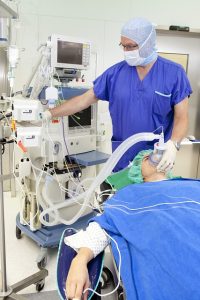The United States is one of the largest and most diverse countries in the world. A few weeks ago, we talked about the differences between medical residency programs in urban and rural areas. However, it is important to note that even within the category of “urban” or “rural,” there are significant differences between different parts of the country. Within the geographic borders of the United States, you can find an example of almost every climate zone, and there are distinctive cultural differences between regions as well.
During your residency, the characteristics of the region in which you live can affect both your lifestyle and your work as a physician. This is especially true if you are pursuing a residency in one of the more general medical residency subjects — such as family medicine or pediatrics — since the types of cases you encounter can depend largely on the cultural circumstances of the region. Therefore, if you are a foreign medical graduate looking to get matched to a residency in the United States, it can be helpful to learn more about the different regions of the country so that you can apply to programs in places where you will feel comfortable living and where you will have the chance to work on cases that fit in with your medical interests and career goals.
The East Coast
The East Coast is one of the most densely populated areas of the country. As a result, you can find more medical residency programs in this region than any other, and you will find most of them in urban and suburban areas. The East Coast is home to some of the largest cities in the country, including New York City, Boston, Philadelphia, and Washington, DC — each of which has its own unique culture. However, they do share some general characteristics, such as highly diverse populations, good public transportation, and easy access to restaurants and grocery stores.
If you live on the East Coast, you can expect to experience four distinct seasons. Summers are hot, and winters can be very cold. In the northern areas, you might get a lot of snow in the winter, but further south, heavy rain is more common. Both spring and fall on the east coast are considered to be beautiful. In general, the culture on the East Coast tends to be more formal than in other areas of the country.
The Midwest
The Midwest, also known as the Great Plains, refers to the inland states between the east coast and the Rocky Mountains. Some of these states include Ohio, Iowa, Illinois, Michigan, and Minnesota. Although large portions of these states are rural, there are also a few major cities, such as Chicago and Detroit. Like the states on the east coast, you can expect cold winters and hot summers in the Midwest states. People in the Midwest are especially well-known for being friendly.
One of the most significant health issues that you will face if you work as a physician in the Midwest is the opioid abuse epidemic. The misuse of opioid medications (such as morphine, oxycodone and hydromorphone) is a growing problem in all parts of the United States, but it is especially concentrated in the Midwest. As a medical resident in the Midwest, you may treat overdose cases or individuals who are seeking treatment for addiction, so if you are interested in pharmacology, psychiatry, or any other drug-related area of medicine, a residency program in the Midwest may be of interest to you.
The South and Southwest
As in the Midwest, the South and Southwest regions are mostly rural, but with a few major cities, such as Atlanta (in the South) and Houston (in the Southwest). The climate in these states is much warmer and more humid in the summer, but Southerners also enjoy milder winters. The South is famous for its hospitality and its delicious comfort food.
Two medical issues that are more prominent in the South than in any other part of the country are obesity and smoking. Southern states like Mississippi, Louisiana, Alabama, Kentucky, and West Virginia have some of the highest numbers of people who meet the criteria for obesity and who say they smoke regularly. As a result, physicians are challenged to treat patients with many obesity-related medical conditions (such as type II diabetes and heart disease), as well as health problems caused by smoking (such as lung cancer).
The Mountain West and the West Coast
The Mountain West region includes the states that are between the Midwest and the West Coast. Some of the states in this region include Colorado, Utah, Idaho, and Montana. Because of the Rocky Mountains, much of this region is rural, although there are a few large cities, such as Denver. The Mountain West is known for its dry climate. In the winter, there is often snow, especially in the high country. In the summer, you can expect a daily temperature swing, with warm days and cool nights.
Outside of the East Coast, the West Coast is the most populous area of the country. Most people on the West Coast live in California, where the climate varies considerably. Southern California is warm and sunny, while Northern California is overcast and cool for most of the year.
The Mountain West and West Coast states are well-known for being among the healthiest in the United States, with low rates of smoking and obesity, and high rates of activity and exercise. However, the outdoor adventure opportunities in the states — like hiking, rock climbing, and skiing — can cause traumatic injuries. If you are interested in treating sports- and outdoors-related injuries — in either an emergency room or a rehabilitation setting — this region could be a great place to work. California is also particularly well-known for cutting-edge technological advances, so a residency in this area could be of interest if you are interested in medical technology research and development.
Choosing Between Regions of the United States
As an aspiring medical resident, it can be a challenge to figure out which region(s) of the country you would be comfortable living in. One way to experience life in the United States first hand is to complete a student elective or graduate externship before you apply. Not only can this give you a better idea of what it is like to live in a particular region of the United States, but it can also give your CV a boost and connect you with physicians who could possibly write letters of reference for your application.
FMG Portal offers student electives and graduate externships in a wide range of fields. Contact us today for more information!





